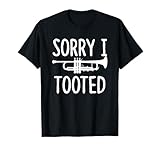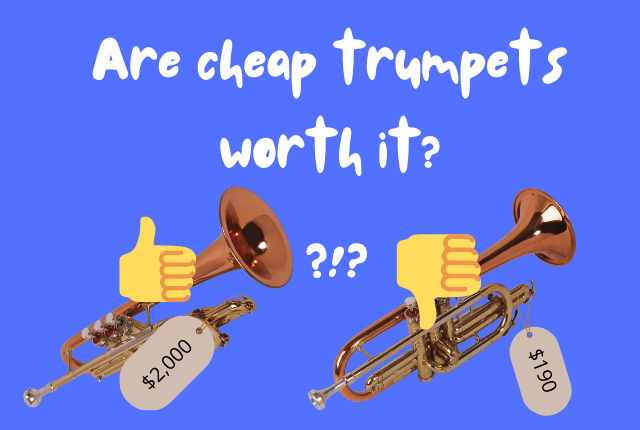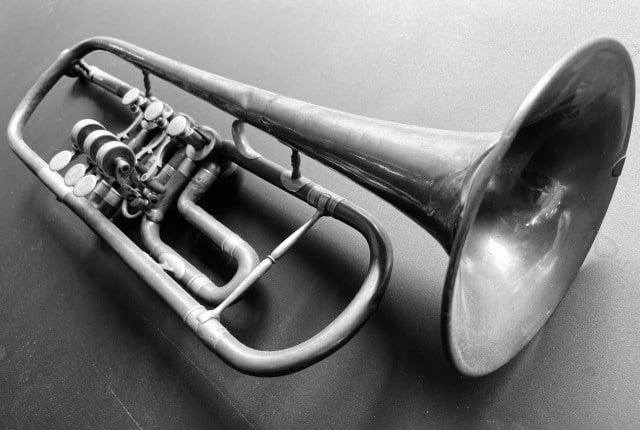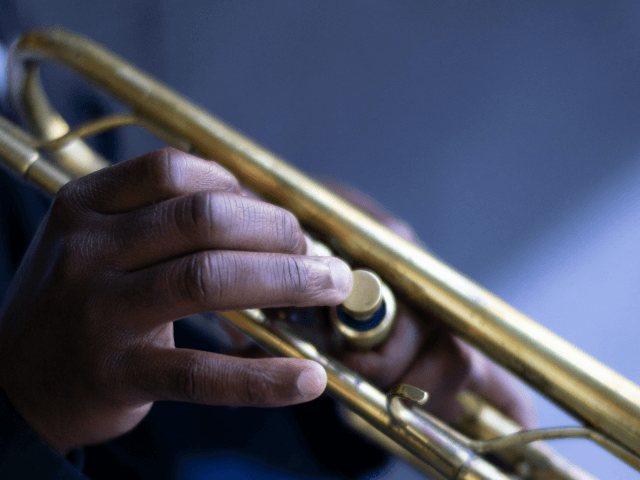There are significant differences in the different types of trumpet valves, in particular the piston valves and rotary valves (or “German valves”, as they are also called). Different valves produce different results, so the kind of valves you use does make a difference.
There are many areas in which these two types of valves differ from each other. The way they travel in their casings, the manner in which they seal, the kind of bracing used, the design of the valve, and the weight of these valves are some of the things that distinguish pistons from rotaries.
Trumpets using rotary valves often also use a larger bell and a smaller bore. This has an effect on the way these instruments play and sound. Trumpets with piston valves will have a lighter sound and a faster, more direct response.
Understanding the difference between piston and rotary valves is important for advanced players. Try out both to get a feel for the differences between them and find out what the relative advantages and disadvantages of these types of valves are.
In this article, we are going to take a comprehensive look at piston vs. rotary valves. We’ll examine the main areas that differentiate pistons from rotaries.
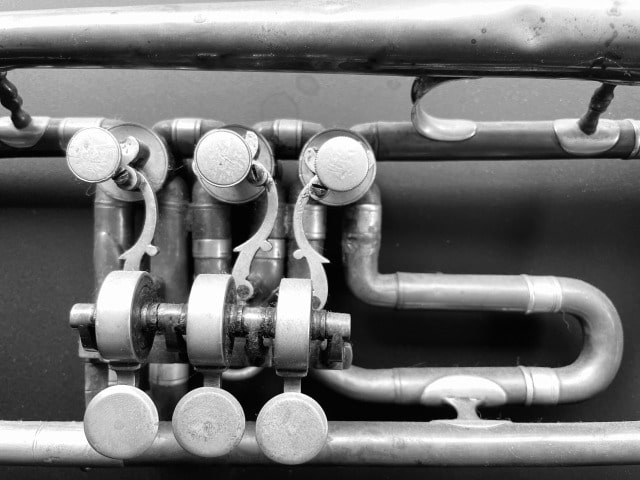
The intensity of maintenance
The first apparent difference between piston and rotary valves valves is the necessary effort needed to properly maintain them.
Rotary valves require higher levels of maintenance compared to their piston counterparts. They are more difficult to take apart, so it might be worth sending them to a professional for cleaning every year or two. You may also want to use spitballs* regularly to keep your instrument clean.
You will have to apply different oils for different valves. Use medium thick oil to grease the external valve and special rotary valve oil* for the rotor. Additionally, you will be required to pull out the 1st and 3rd slides every time you need to empty them. Lastly, it takes more time to let out water out of a trumpet fitted with rotary valves than it takes to remove from one fitted with piston valves.
The ease or difficulty of valving
Another major difference between rotary and piston valves is the ease or difficulty with which you can navigate the valving processes. With a rotary valve, you will enjoy lesser ease of half-valving and your ability to bend the notes makes the trumpet less suitable for Jazz and more ideal for classical music.
Additionally, the lever travel of the valve is shorter and hence it makes half-valving a bit difficult. The spring tension of the rotary valve is higher compared to the piston one and this height makes it necessary for a user to have very strong fingers so as to navigate well.
The ability to blend with other instruments
Another difference between these two types of valves revolves around the way they allow a trumpet to blend with other musical instruments. Pistons permit a trumpet to produce a sound that stands out above the other musical instruments that it is accompanying. On the other hand, trumpets that are fitted with rotary valves produce a mellower sound that harmonizes well with other wind instruments it is accompanying.
The quality of tone
Rotary valve trumpets have a slightly different tone quality that is usually broader than that of piston valves. Also, they are very difficult to overblow and can take a lot of air so you can play very loudly.
The holding position
Trumpets fitted with rotary valves are flatter in shape compared to their piston valve counterparts. This difference in the form of the two types of trumpet valves allows for different styles of holding the trumpet as you blow them. For instance, you will need to hold a rotary system trumpet as if you are nibbling on a hamburger.
The sharpness and flatness of the intonation
There is also a slight difference in the intonation of the two forms of valves. Rotary valves have a flatter tone compared to their piston counterparts. They go flatter in the classical upper register, and they are ideal for users who go sharp in this particular area.
Looking for a teacher?
Want to get lessons at the comfort of your own home? Check out the course Learn to Play the Trumpet: Beginner to Pro Made the Easy Way* on Udemy! (See their full trumpet course line-up here*!)
The way they are played
Another main difference is in the way the valves are played. Let’s take the piston valve as our first example. For you to play the pistons, you need to press the first piston which allows air to flow through the first slide. When you press the second and third piston, the pressing will cause air to pass through the second and third slides as well. It is the pressing process that allows air paths to elongate.
But things are a bit different with the rotary valves. When you press the lever and turn the rotary 90 degrees, it alters the flowing of air in the trumpet. As you play the trumpet, the tube remains shorter if you don’t press the lever, and longer when you push the lever.
Their scope of use
Regarding their geographical scope of popularity, rotary valves gained popularity in Germany and Austria, which is also why rotary valves are sometimes called German valves. Equally, trumpets with rotary valves are sometimes referred to as German trumpets.
Trumpets that have piston valves were widely accepted in countries like France, and here in the US, piston valves are much more popular. Trumpets with rotary valves are often used for classical music like Brahms, Mozart or Beethoven, but are in no way restricted to that.
The positioning of the valves
When you play trumpets that are fitted with these two types of valves, you feel a slight difference in their positioning. Piston valves will give you a more centered feel than rotary ones.
Flexibility
The flexibility of the valves is another thing that differentiates pistons and rotaries. The piston valve is more flexible in its technical passages as opposed to the rotary, which is less flexible. Also, the rotary has a darker and more resonant timbre (which is why it is sometimes preferred for Bruckner and Strauss).
The cylindrical bore
Rotary valves have a cylindrical bore that is smaller compared to that of their piston counterpart, but their lead pipe and bell are larger than those of the piston. In addition, trumpets with rotary valves have a wider pattern that is intended to avoid curves in the tubing while those with piston have a narrower pattern.
Related Articles:
- Best Student Trumpets Reviews
- The Best Trumpet Cases (An Illustrated Guide)
- How To Clean A Trumpet
- The 5 Best Online Resources and Lessons for Beginner Trumpet Players
- The 5 Worst Things When it Comes to Playing a Trumpet (and How to Avoid Them!)
TrumpetHub.com is a participant of the Amazon Services LLC Associates Program, an affiliate advertising program. Links marked with an asterisk (*) are affiliate links. If you buy a product through an affiliate link, we will get a small commission without extra cost to you. This helps us earn an income off the free content we provide to you. Thank you for your support!


